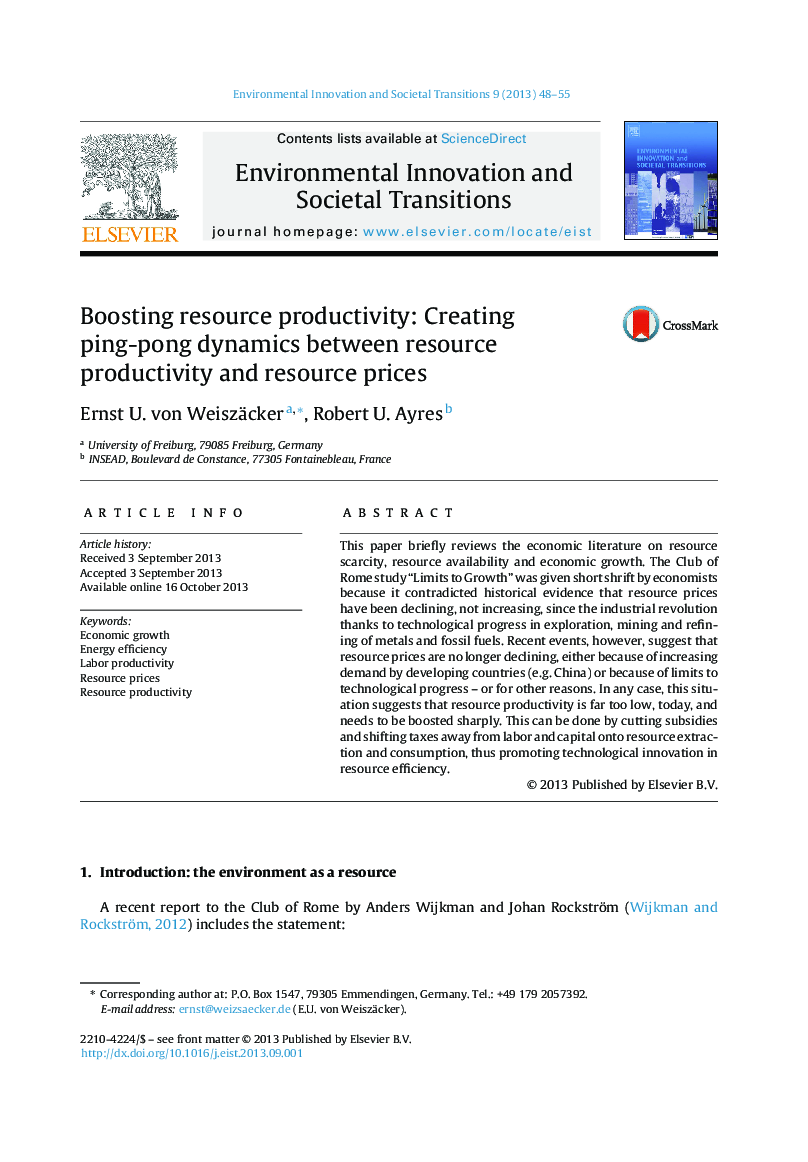| کد مقاله | کد نشریه | سال انتشار | مقاله انگلیسی | نسخه تمام متن |
|---|---|---|---|---|
| 108213 | 161886 | 2013 | 8 صفحه PDF | دانلود رایگان |
• The environment is an undervalued resource.
• Extractive resources are no longer declining in cost and price.
• Resulting limits to (economic) growth are binding because the economy critically depends on material resources.
• Increasing labor productivity is no longer necessarily good news, because it means increasing unemployment.
• Future economic prosperity – and long-term planetary survival – must be based on dramatic increases in resource (not labor) productivity.
This paper briefly reviews the economic literature on resource scarcity, resource availability and economic growth. The Club of Rome study “Limits to Growth” was given short shrift by economists because it contradicted historical evidence that resource prices have been declining, not increasing, since the industrial revolution thanks to technological progress in exploration, mining and refining of metals and fossil fuels. Recent events, however, suggest that resource prices are no longer declining, either because of increasing demand by developing countries (e.g. China) or because of limits to technological progress – or for other reasons. In any case, this situation suggests that resource productivity is far too low, today, and needs to be boosted sharply. This can be done by cutting subsidies and shifting taxes away from labor and capital onto resource extraction and consumption, thus promoting technological innovation in resource efficiency.
Journal: Environmental Innovation and Societal Transitions - Volume 9, December 2013, Pages 48–55
